Kyoto – A Guide to Japan’s Ancient Capital
After six days in Tokyo, we took the shinkansen (bullet train) down to the ancient capital of Japan, Kyoto. Step into the amazing history of Japan (along with thousands of other tourists) and explore this beautiful city. I have all the tips on how to find peace away from the crowds and experience the best of Kyoto.
Need to Know for Tokyo:
Currency: Japanese Yen (JPY)
Language: Japanese
Airports:
ITM – Itami Airport (Osaka)
KIX – Kansai Airport (Osaka)
100 volts and 50/60 hertz, Type A & B plugs (nearly the same as the USA, I didn’t use a converter/adapter once)
Planning Your Trip
Accommodation:
Neighborhood: You have to decide if you want to be central but in a busy area, or have a more peaceful/calm location but more transit time. We opted for the central option by staying in Higashiyama ward. Another central location but slightly less busy would be Nakagyo ward. The further you get away from the main attractions of Kyoto, the more calm it will be.
Airbnb vs. Hotel: I only did a little research on this, but most blogs I read recommended staying in a hotel, mainly due to the hospitality support, language barrier, and location. We stayed at the Kyoto Granbell Hotel and it worked well for us. The rooms were quite small which you can generally expect in Japanese hotels. There was also a lovely breakfast, onsen, and coin laundry here.


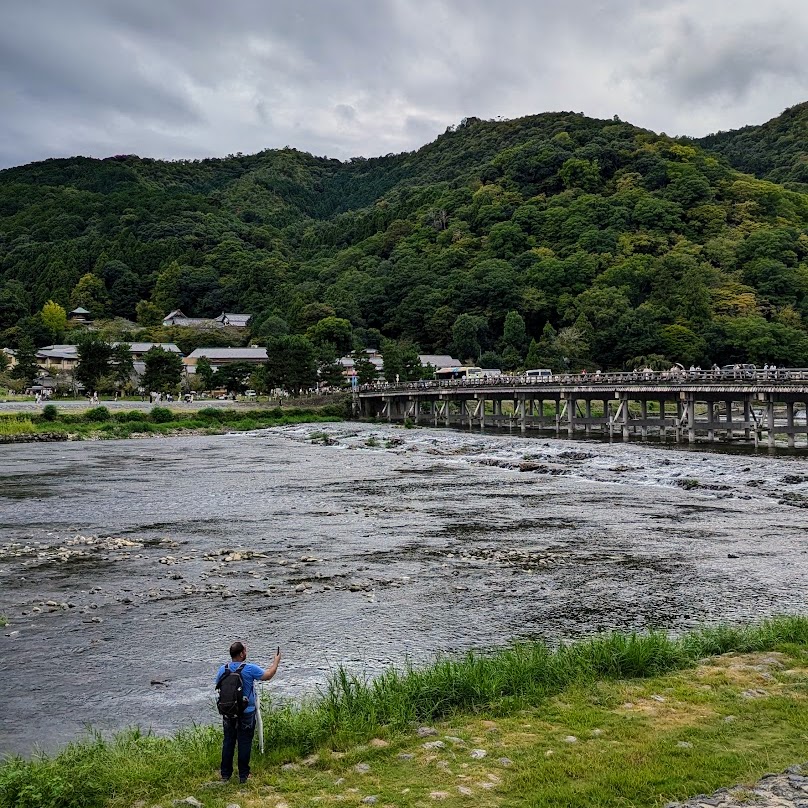
Getting to Kyoto from Tokyo:
By Train: The best way to get to Kyoto from Tokyo is to take the Shinkansen (bullet train). Here’s a detailed blog on how to do so, but the key points are plan to take the Shinkansen from Tokyo Station or Shinagawa Station to Kyoto Station. You can go to the JR office and buy a ticket in person. The people are very helpful and it’s so much easier than trying to figure out the ticket machines. Depending on the train you take, the journey will be between 2-3 hours and cost ~13,000 JPY.
Getting Around Kyoto:
Download the SUICA card in your Apple wallet and you’re pretty much good to go. Just keep this card loaded with money to pay for trains and buses. You will just tap in and tap out on any train/bus you ride. SUICA is one option of the many ‘IC Cards’ that are used in Japan.
Trains and Buses: The public transportation in Kyoto is less efficient than Tokyo, but you can still get almost anywhere. We used Google Maps or Apple Maps to navigate and it tells you train/bus lines, station entrances and exits to follow, platforms/stops, and timetables. Given how huge the system is, it was surprisingly easy to navigate and use.
The buses do get REALLY packed so be prepared to pack in like a sardine.
You can also buy a 1 day pass if you’re going to be moving all over the city sightseeing.
By Taxi: There are plenty of taxis in Tokyo and I would say the cost is pretty similar to Ubers/Lyfts in the US. You can always have a hotel or restaurant call you a taxi, or you can use Uber or one of the local apps. The few times we did call a taxi, I used GO Taxi.



What to Do in Kyoto
Higashiyama Ward
Kiyomizu-dera: This is a beautiful Buddhist temple in Kyoto and one of the most popular and iconic destinations. Leading up to the temple is a neighborhood of winding shopping streets and restaurants. The peaceful temple complex includes several other shrines, including Jishu Shrine. The cost to enter the complex and explore the beautiful area is 400 JPY.
Sannenzaka: This is a stone-paved pedestrian area leading up to the famous Kiyomizu-dera temple, Kodaiji Temple and Yasaka-jinjia Shrine. The streets are usually packed with tourists exploring the shops and sights. We loved visiting at night after everything was closed, to peacefully wander the beautiful streets.
Yasaka Pagoda: Another iconic sight in Kyoto is the Yasaka Pagoda, towering over the narrow stone-paved streets. We just walked around to take in the view. Visitors are allowed inside to see the tower’s architecture, statues and fading paintings for about 400 JPY. The pagoda was originally built by the Imperial Prince Shotoku in 589.
More Shrines: There are so many beautiful shrines and temples in this neighborhood to explore. A few we didn’t have time to checkout are: Yasaka Shrine, Kodaiji Temple, Kenninji Temple, and Shōrenin Temple.



Nakagyo Ward
Nishiki Market: This indoor/outdoor market is one long street packed with vendors selling all kinds of foods. You’ll find tons of seafood and fried foods being sold ready to eat, as well as packaged pickles, seasonings, fish, and more! If you are a foodie and want a guided tour of this market, you can check out Ninja Food Tours!
Nishiki Tenmangu Shrine: We almost didn’t find this place because there’s now a shopping mall build around it, but make sure you stop in at this beautiful little shrine. It is a peaceful escape in the middle of a bustling area with decorative lanterns lining the entrance.
Nijō Castle: One of our favorite stops in Kyoto! We had just watched Shogun so this castle looked so familiar (it inspired the set of the show). This was one of our favorite spots because not only can you explore the grounds, gates, and zen gardens, you can actually go inside and see the different meeting rooms in the castle. Entrance fee is 800 JPY and last admission is at 4pm!
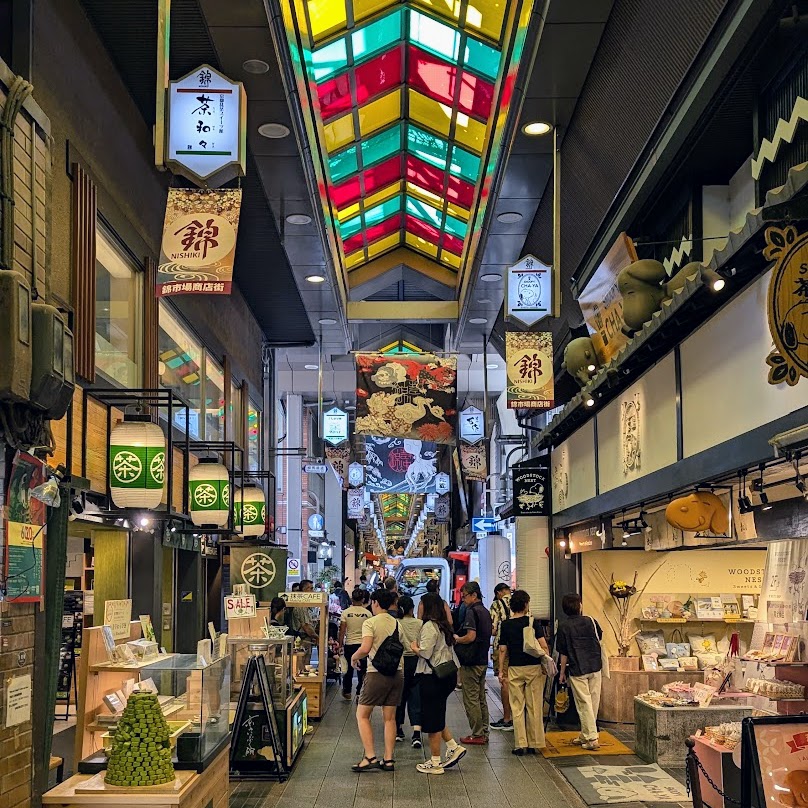
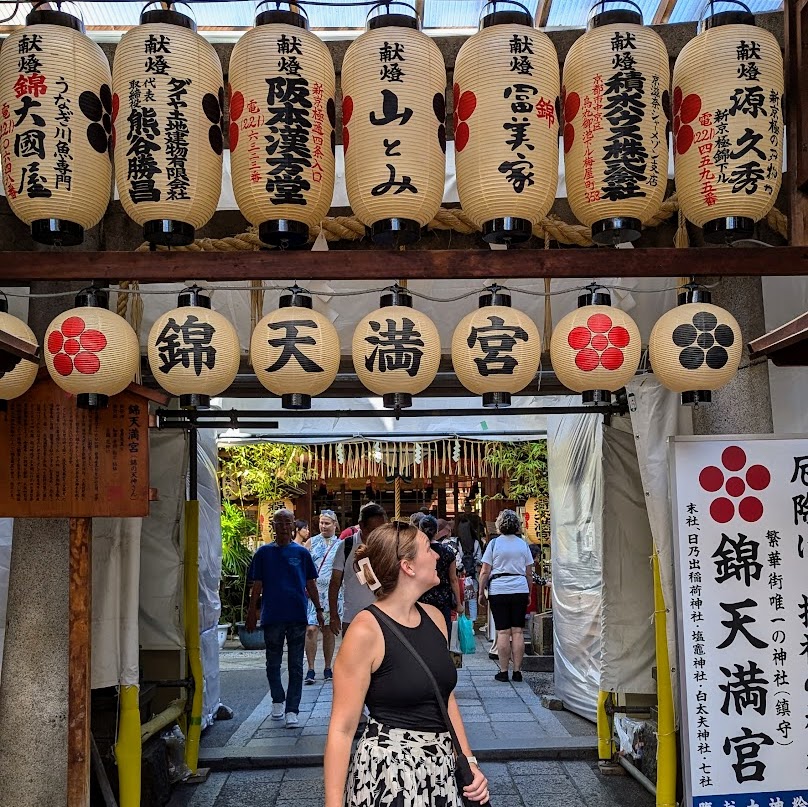
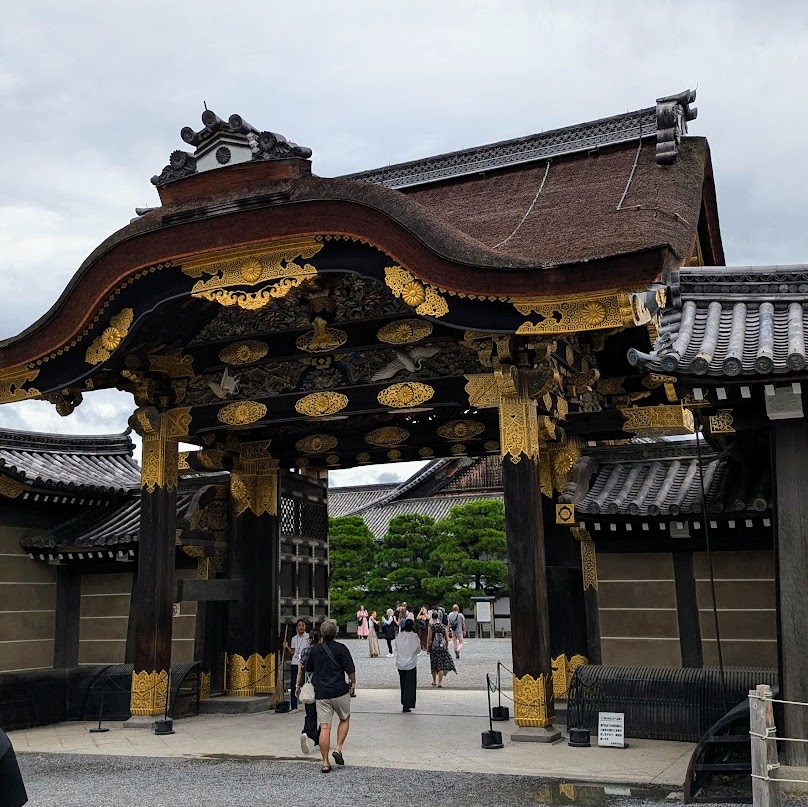
Sakyo Ward
Higashiyama Jisho-ji: A great place to escape the crowds and chaos, come visit this peaceful temple, complete with zen garden and walking trail. We spent an hour roaming around the beautiful grounds and taking in all the natural elements of the complex. The entrance fee is 500 JPY.
Philosopher’s Path: Also known as Tetsugaku No Michi, this beautiful path goes along a river running from near Higashiyama Jisho-ji down to near Kumano Nyakuōji Shrine. This is known as Philosopher’s Path since it used to be the less affluent side of Kyoto so the poor philosophers and artists would live here and spend time walking along the river for inspiration.
Nanzen-ji: Considered one of the most important zen temples in all of Japan because It is the head temple of one of the schools within the Rinzai sect of Japanese Zen Buddhism. Admission is 600 JPY.
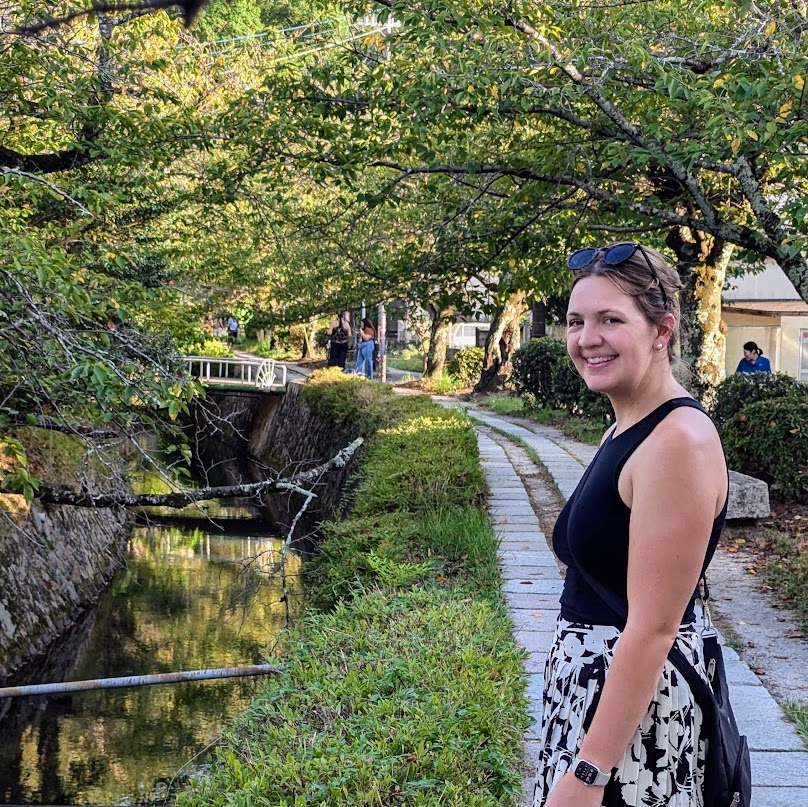
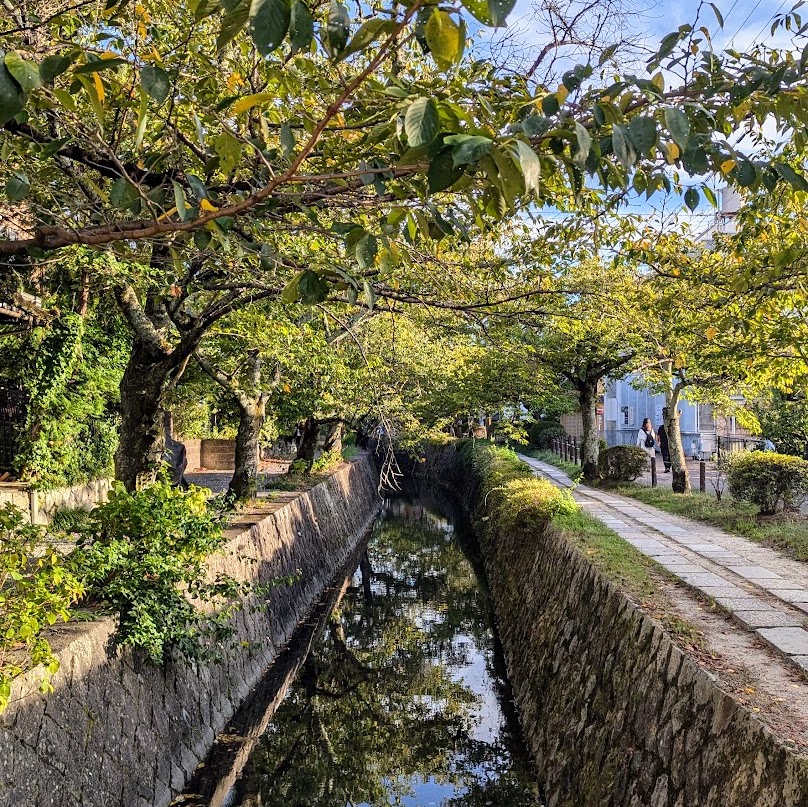
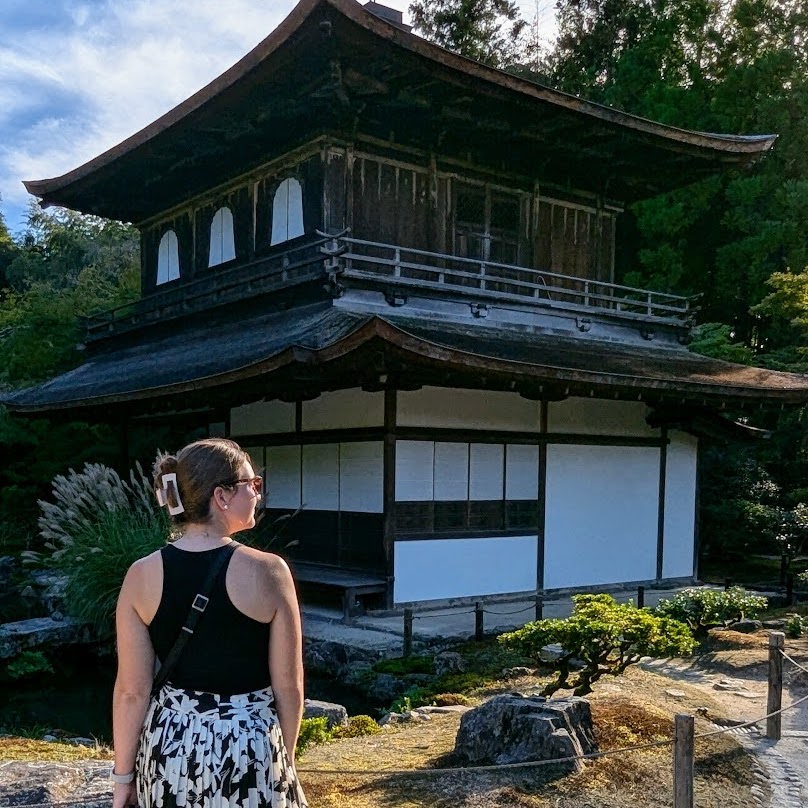
Kita & Ukyo Wards
Kinkaku-ji: This historic and tranquil temple is famous for its striking gold-leaf facade. The temple is nestled in landscaped gardens & on the edge of a beautiful reflecting pond. Visitors cannot go inside the temple, only admire it from the outside in the surrounding gardens and complex. Not many people know that this golden pavilion is actually a pagoda made to house the sacred relics of the Buddha. The admission fee is 500 JPY.
Togetsukyō Bridge: This iconic wooden bridge stretches over the Ōi River (Katsura River) near Arashiyama Park. Many people come on this bridge for the surrounding views, or to get to the ever popular Monkey Park (which we actively avoided).
Arashiyama Bamboo Forest: This is one of the most photographed locations in all of Kyoto, and rightfully so because it feels like a different world standing amongst this bamboo forest. Although, this can be one of those instagram vs reality situations because it is usually packed with other tourists. You can try going on off hours, or check out the next location for a hidden gem.
Adashino Nenbutsuji Temple: About 1.5km walk north of the Arashiyama Bamboo Forest, you’ll find this amazing temple, with its own bamboo path. You will see approximately 8,000 stone images and pagodas here commemorate the souls of those who died without kin. On the way there, enjoy a scenic stroll through the Sagano area. The entrance fee to the temple is 500 JPY and open until 4:30 PM.
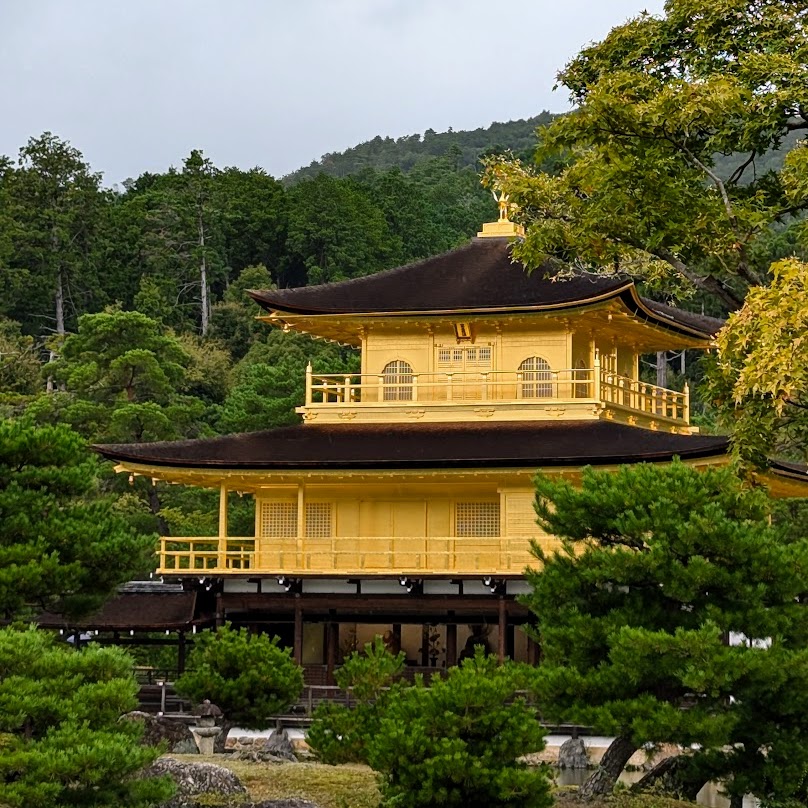


Fushimi Ward
Fushimi Inari Taisha: This is pretty much considered THE Kyoto attraction. This amazing Shinto shrine is famous for its thousands of vermilion torii gates that you’ll see all over your instagram if you start searching for Kyoto, or even Japan in general. The main shrine is at the base, but you can climb all the way through the thousands of torii gates to the top shrine. This is a proper hike, so bring water and good hiking shoes.
Along with this being one of the most iconic sights, it is also one of the busiest. We made the call to wake up at 4:30am and head there before breakfast and this was 100% the right decision. Even as we were leaving the shrine at 6:30am it was starting to fill up with tourists.
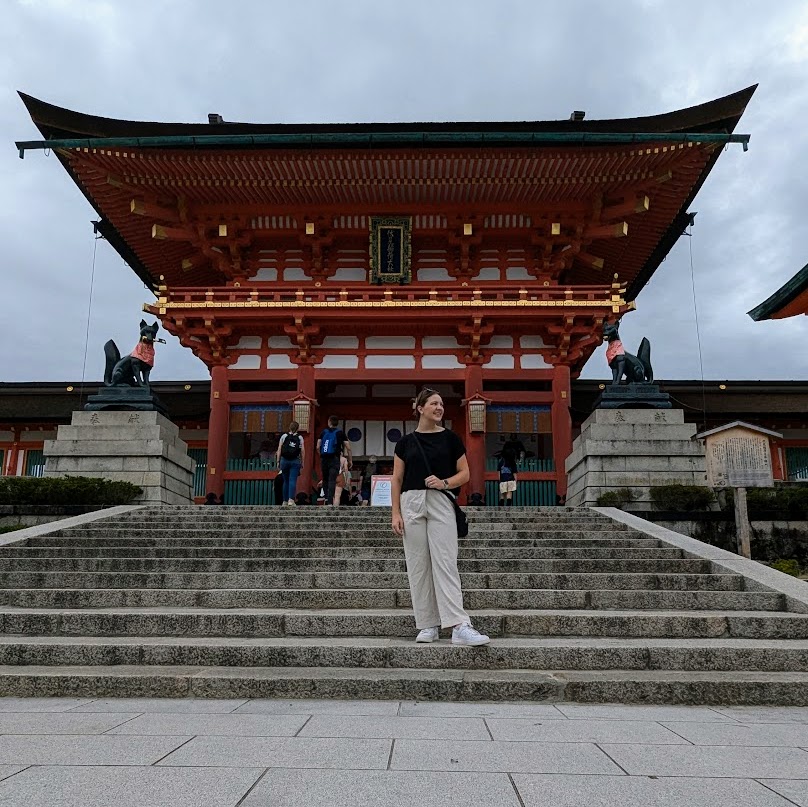
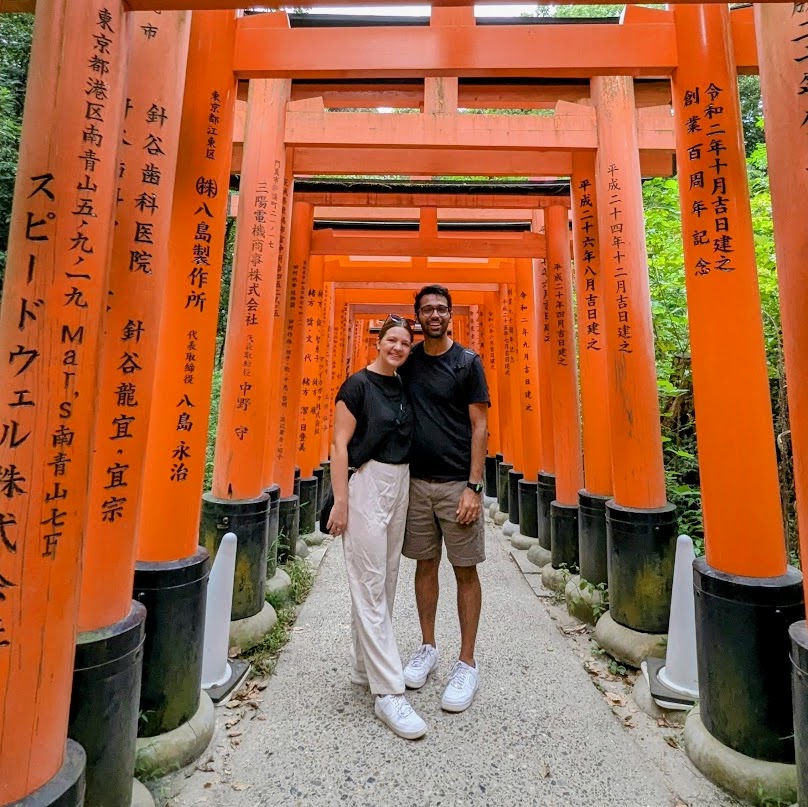

Top Eats & Experiences in Kyoto
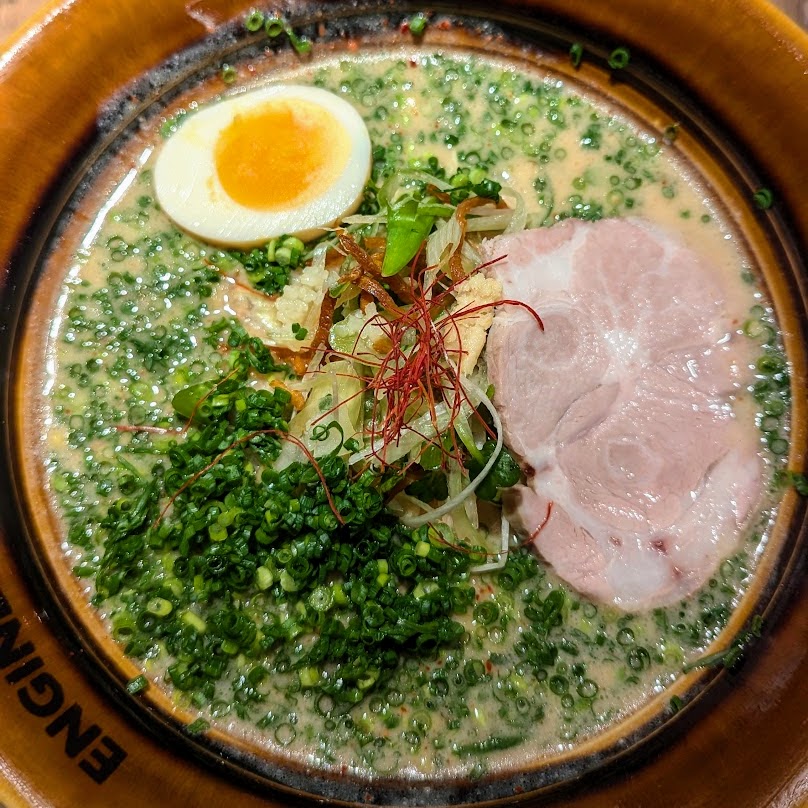


December 26, 2024




